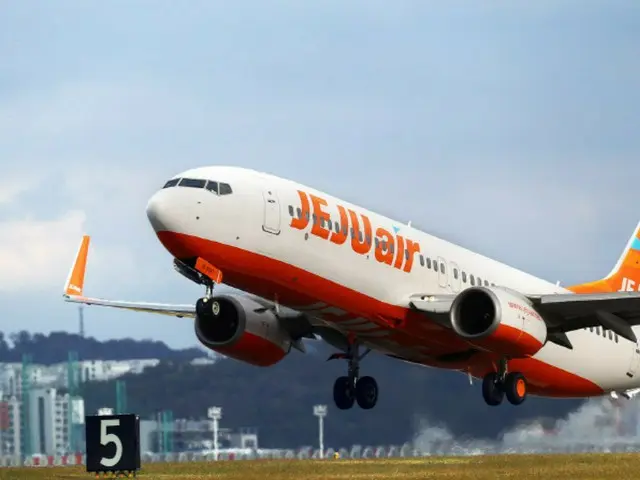The structure was installed to support a localizer, a type of antenna that guides passenger planes to the runway.
According to the KBS broadcasting station, it is unusual for the lower part of the localizer to be made of solid concrete. The plane burst into flames immediately after hitting the structure.
Only two people survived, making this the most devastating passenger plane accident to occur in South Korea. An aviation expert who appeared on a British news program said, "There was a strong barrier 200 meters away from the runway.
"I've never seen such a structure exist before," he said, pointing out that "such a sturdy structure should not be in this position."
The Jeju Air passenger plane, carrying 181 passengers and crew, arrived at Muan International Airport at around 8:30 a.m. on the 29th of last month.
After the control tower gave the go-ahead, the pilot of the passenger plane reported a bird strike. The plane sent out a distress signal, calling for help, and the first landing was a "go around"
For some reason, the wheels did not function properly, and the second attempt to land on its belly failed. The aircraft left the runway, crashed into the wall, and burst into flames.
179 passengers and crew members were killed in the accident, making it the deadliest passenger plane accident to occur in South Korea and the second deadliest accident on a South Korean aircraft since 1997.
This was the largest loss of life since the Korean Air crash in Guam, which killed 229 people. The Korean newspaper Chosun Ilbo reported on the scene, "It was literally a scene of carnage. The passenger plane that crashed into the airport's outer wall was torn apart after the fuselage.
Only the tail and a part of the tail were left with some shape that could be made out. The whole of the aircraft was completely in pieces. Rescue workers working to recover the body said, "This is it.
"I have never seen such a cruel scene in my life," Jeju Air President Kim I-bae said at a press conference held at a hotel near Gimpo Airport in Seoul on the 29th of last month.
Regarding the cause of the accident, Kim said, "We don't know at this point," but added, "We feel a deep sense of responsibility."
A memorial for the victims was set up in a gymnasium near the airport on the 30th of last month. Visitors are offering flowers and incense, and praying together.
Choi Sang-mok, Deputy Prime Minister for Economy and Minister of Strategy and Finance, who is acting for President Yoon Seok-yeol, also paid his respects on the same day and wrote in his condolence book, "In memory of the 179 people who died,
"I will do my utmost to make our country safer," he wrote. Possible causes of the accident include a bird strike and a malfunction of the landing gear.
The Korean government's accident investigation committee is currently working with Boeing, the manufacturer of the plane, to investigate the incident.
In the future, the flight recorder, which records flight data such as speed and altitude, and the voice recorder, which records voices from within the cockpit, will be analyzed to confirm the situation immediately before the accident.
In the midst of this, South Korean media has been reporting the views of experts who have raised concerns about the structure of the "localizer" that guides aircraft near the runway.
The Isa has a concrete structure at its bottom, which is located about 200-300 meters from the end of the runway.
David Learmount, editor of the British weekly magazine Flight International, said in an interview with Sky News on the 30th of last month that if the plane had not crashed into the wall, the passengers would have been safe.
"There is a high possibility that the aircraft survived," he said. "If it had not crashed into the road, it would have broken through the fence, passed over the road and stopped in an adjacent vacant lot. If the aircraft had slowed down,
"There was enough space to stop the train. There may have been some damage when it broke through the barrier, but the passengers would have survived," he said.
He is a pilot and instructor in the Royal Air Force and a leading figure in the field of aviation, having twice won the top prize at the Royal Aeronautical Society.
The localizer had reached the end of its service life (15 years), so it was replaced and its foundation was reinforced. Public broadcaster KBS pointed out that it is unusual for the lower part of the localizer to be made of solid concrete.
Meanwhile, the Ministry of Land, Infrastructure and Transport emphasized on the 31st of last month that the structure is outside the buffer zone that is set up in case an aircraft overruns the runway.
The height was 199 metres, which met the international standard of a minimum of 90 metres, and they stated that there was no problem with the structure's location.
2025/01/06 10:54 KST
Copyrights(C)wowkorea.jp 5

